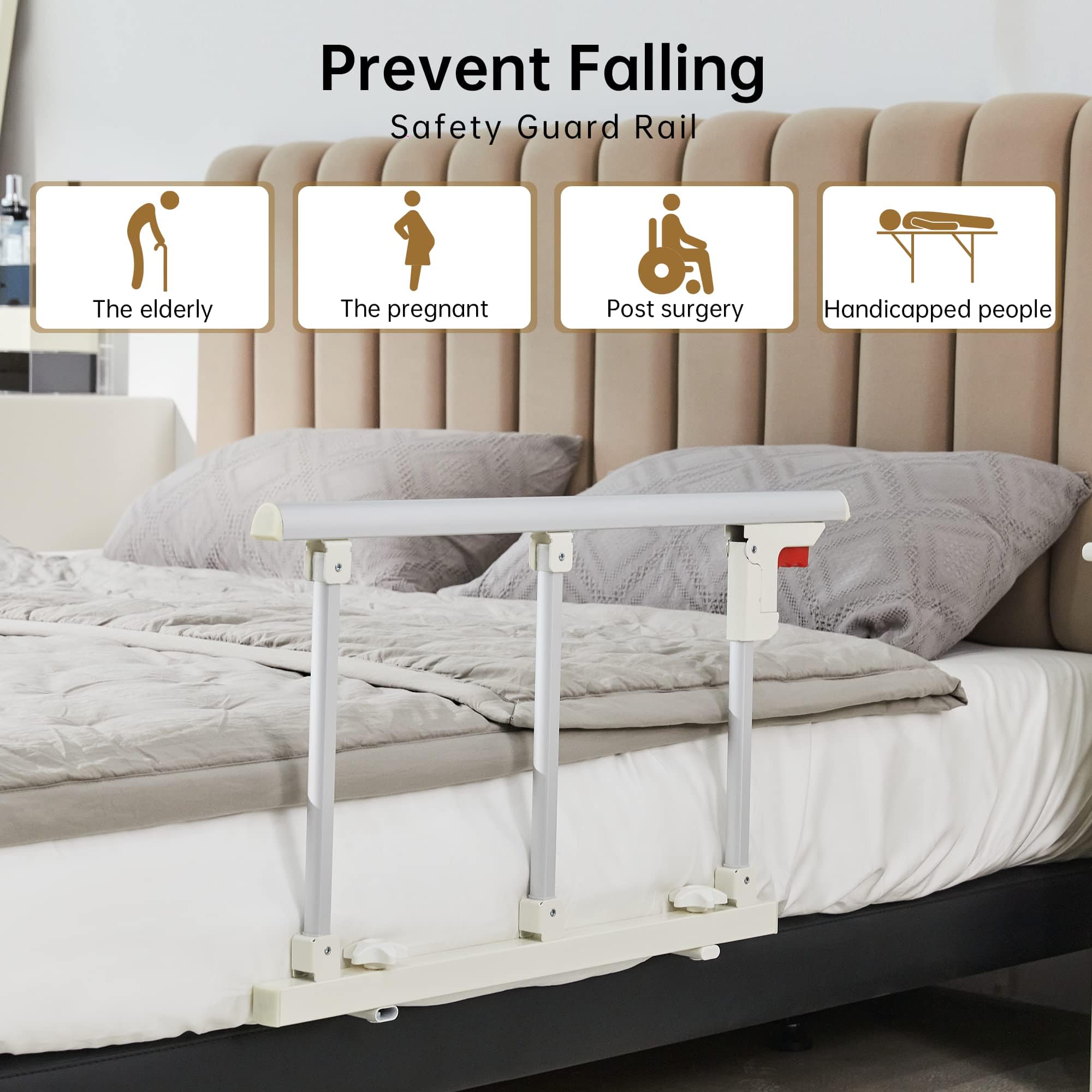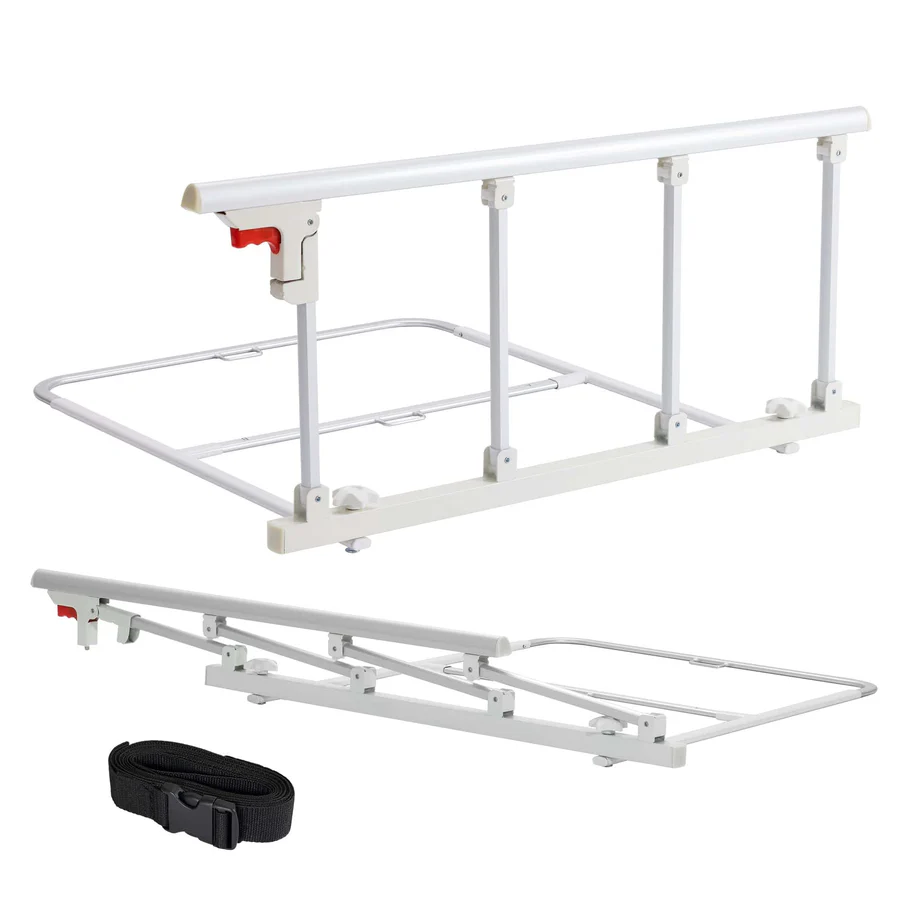Bed rails can be super helpful for older adults who need a little support getting in and out of bed—or who tend to move around a lot during the night. But here’s the thing: when they’re not used the right way, bed rails can actually cause harm instead of preventing it.
So before you install one and call it a day, it’s important to understand how things can go wrong, and what to look out for. Because safety doesn’t stop at just having the equipment—it’s all about how it’s used.
Not Every Bed Rail Is Right for Every Person
Let’s start with the basics: bed rails aren’t universal. They come in different sizes, shapes and setups, and not all of them fit all beds. Trying to attach a rail to the wrong type of bedframe or mattress can lead to some real safety problems—like rails coming loose or creating unexpected gaps.
Even a solid-looking setup can become dangerous if the rail isn’t properly secured or if it doesn’t match the mattress height. A few inches of misalignment can leave enough space for someone to get trapped.

The Scariest Risk
This is the big one, and it’s serious. Entrapment happens when a person’s body—or part of it—gets stuck between the mattress and the rail. Arms, legs, or even the head can slip into that space, especially if the person rolls around in bed or is confused and tries to climb out.
In worst-case scenarios, this can lead to injury, breathing issues or even death. It’s especially risky for:
- People with dementia or cognitive decline
- Very frail or thin individuals
- Those who are restless sleepers
If the bed rail isn’t the right size, isn’t tight enough or has too much space between the bars, it becomes a hazard instead of a help.
Climbing Over for Falling Harder
Here’s something many people don’t expect: some seniors, especially those with memory loss or confusion, will try to climb over bed rails for seniors—thinking it’s the only way to get out.
And when that happens? They don’t just fall from mattress height—they fall from the top of the rail, which is much higher. That increases the risk of serious injury, including broken hips, wrists, or even head trauma.
If someone is known to try to get out of bed without help, using a tall rail might actually make things more dangerous, not safer.
Tripping Hazards and Bruising
Even when someone is fully aware and mobile, bed rails can still cause bumps and bruises. A rail that’s too close to the body, or has sharp corners, can lead to scrapes and discomfort—especially during sleep or repositioning.
Also, fold-down rails that aren’t properly locked in place can stick out and cause people to trip when getting in or out of bed. The rail isn’t always the problem—it’s forgetting it’s there.
Restriction Without Intention
This one’s a little more subtle. Bed rails are supposed to help—not restrict. But when a rail is used to keep someone in bed (instead of assisting them), it can start to feel like a form of restraint.
That’s a big deal in both ethical and legal terms, especially in caregiving settings. Bed rails should support freedom of movement, not lock someone in place. If someone feels trapped or anxious because they can’t get out of bed, it can cause distress, agitation or even panic—especially for people with Alzheimer’s or anxiety disorders.
Loose or Wobbly Rails
Over time, even a well-installed bed rail can loosen up. Screws come undone, mattress pads shift, or the frame flexes with movement. If you’re not checking it regularly, you might not even notice until it suddenly gives out when someone leans on it.
A rail that collapses or shifts while being used can cause a fall or injury, especially if the person is depending on it for support while standing up or sitting down.
So… How Do You Avoid These Risks?
The good news? Most of these problems are totally avoidable with the right setup and a bit of attention. Here’s how to stay on the safe side:
✅ Choose the right rail for the right bed and mattress.
✅ Install it securely and double-check for gaps.
✅ Inspect it regularly for wear, looseness, or damage.
✅ Make sure the person using it understands how to use it—or that a caregiver is present.
✅ Avoid full-length rails if the person is likely to try to climb over.
✅ Use padding if bruising is a concern.
Bed rails can be super helpful—but only when used thoughtfully and safely. The key is to match the rail to the person’s needs, abilities, and bed setup. A well-chosen rail can offer peace of mind and a boost in confidence, but it’s never a “set it and forget it” situation.
Take the time to get it right, and check in often. A little effort goes a long way when it comes to keeping someone safe, comfortable, and supported through the night.
